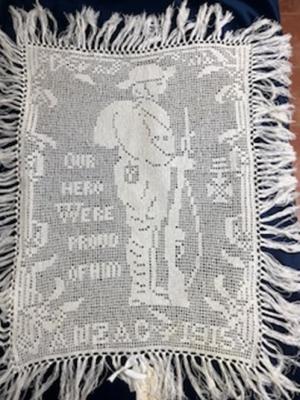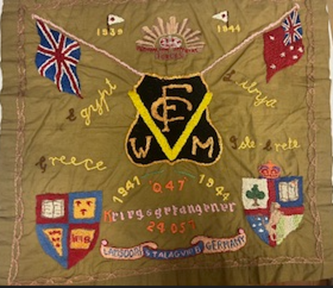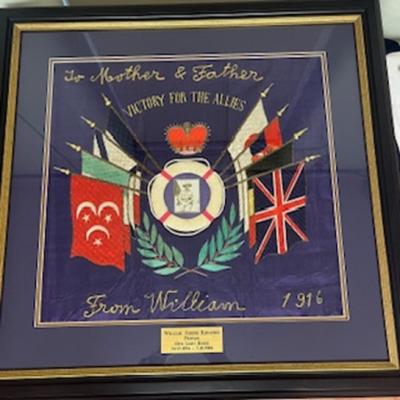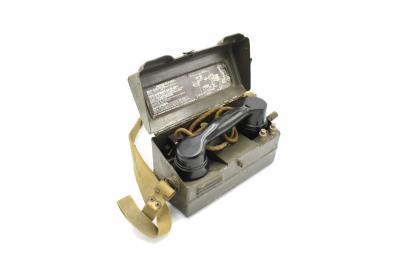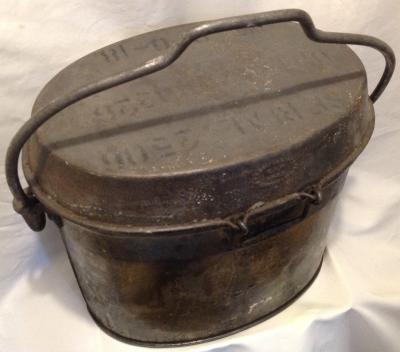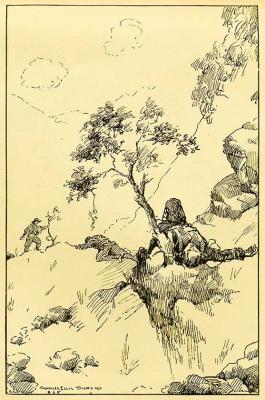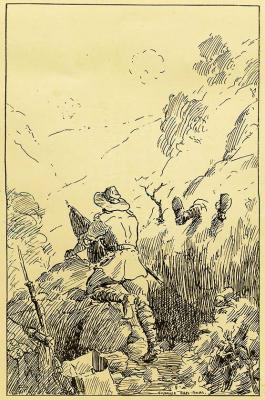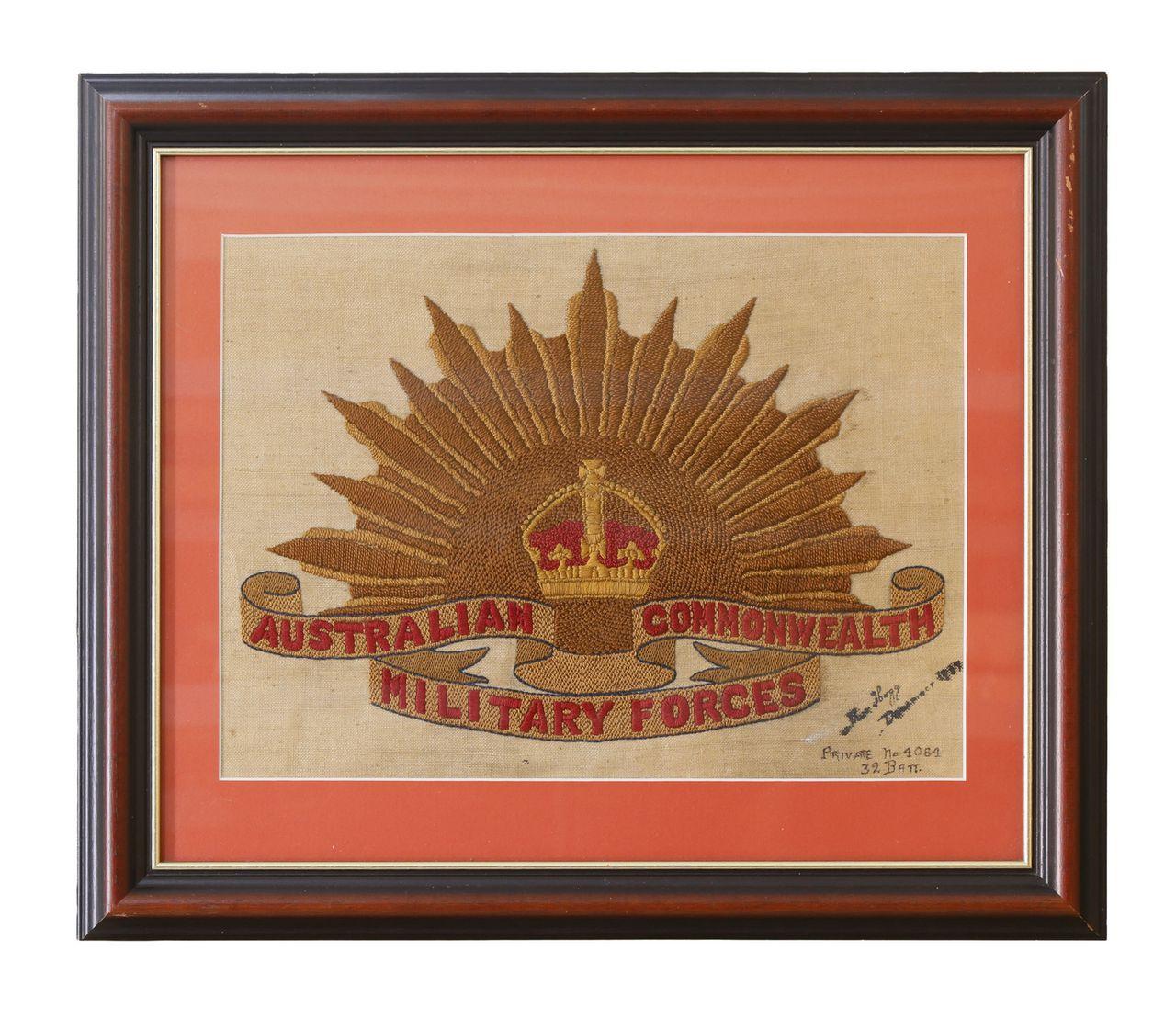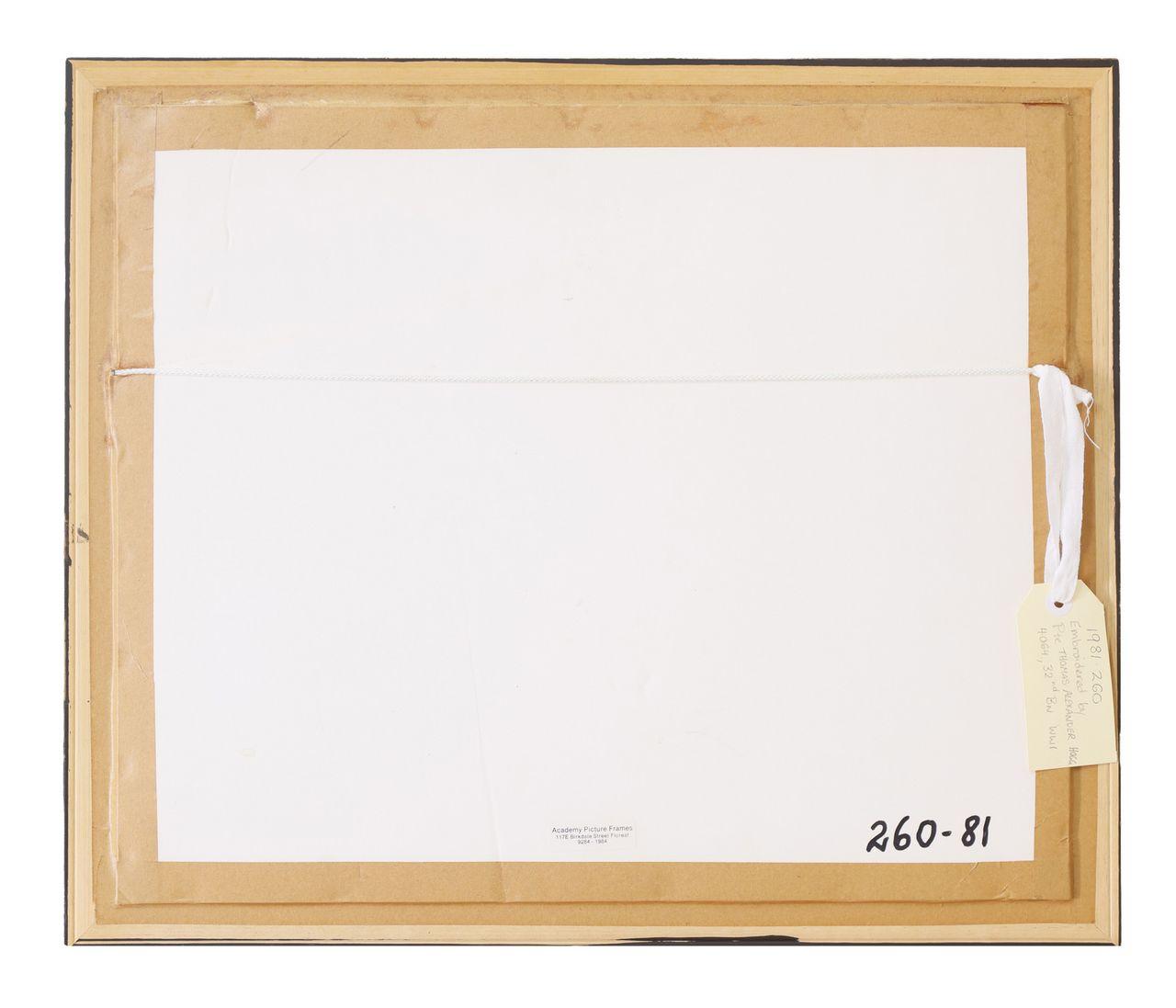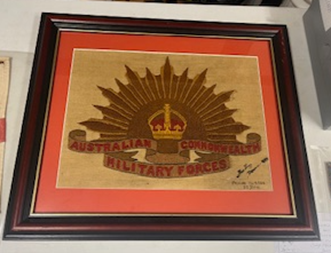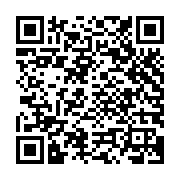World War 1, Framed Soldier Embroidery, Rising Sun Badge, 4046 HOGG, 32 Battalion AIF
In modern frame, a Soldier Embroidery of the Rising Sun, Australian Commonwealth Military Forces badge worked by 4046 Private Thomas Alexander Hogg, 10th Reinforcements, 32nd Battalion while convalescing.
Thomas was 32 when he enlisted and he embarked from Fremantle on HMAT Port Melbourne on 28 October 1916. In February 1917 he left England for France. The 32nd Battalion played a major role in Polygon Wood, part of the Third Ypres campaign in September 1917. The attack on the Hindenburg Line across the St Quentin Canal tunnel by the 3rd and 5th Australian Divisions and two American divisions was their last major action between 29 September and 1 October. During this action Pte Hogg was injured by a gunshot wound to his right leg and was transferred to the ex 57Th General Hospital Marseilles. He was then admitted to Red Cross Hospital Christchurch England. The hospital started in Oct 1914 with 50 beds, upon closure in January 1919, it had treated some 5,000 patients. Hospitals were staffed by trained nurses of either the Red Cross or the St. John Ambulance Brigade, and many Voluntary Aid Detachments (VAD’s).
Details
Details
Hospitals offered rehabilitation embroidery during a soldier’s convalescence and the Red Cross also supplied printed embroidery cloths. Soldiers could stitch alone, in groups, in bed or sitting in chairs. The stitching on this textile is incredibly neat and although the background canvas cloth is aged, the embroidery is in wonderful condition with colours still strong. A careful inspection will reveal some of the template or drawing of the Rising Sun badge around the edges that Thomas followed with his stitching.
Donor Registration 1981-260 On exhibit in the Temporary Exhibition Gallery, 1 August through 30 September 2025
Australian Army Museum of Western Australia
Australian Army Museum of Western Australia
Other items from Australian Army Museum of Western Australia
- World War 1, Filet Crochet Commemorative Tablecloth, 5678 CALLAGHAN, 1915
- World War 2, Embroidered Handkerchief, WX3595 TILLOT, 2/7th Field Ambulance
- World War 1, Family Framed Embroidered Textile Souvenir, 1607 KINSTON, 10 Light Horse, 1916
- Vietnam - Scrim Sweat Rag, 55093 LAWLER, 4 Field Regiment,
- Manual Rural Telephone Exchange / Switchboard, 1930s
- World War 2, Field Telephone Set H Mk III
- World War 2 - Wireless Set Army Military Radio ZC1 Remote Control Unit
- World War 1, 3 Gallon Dixie or Cook Pot
- World War 1, South-West Asia, Türkiye, Gallipoli, SILAS, "Crusading at Anzac"
- World War 1, South-West Asia, Türkiye, Gallipoli, SILAS, "Crusading at Anzac"
- World War 1, South-West Asia, Türkiye, Gallipoli, SILAS, "Crusading at Anzac"
